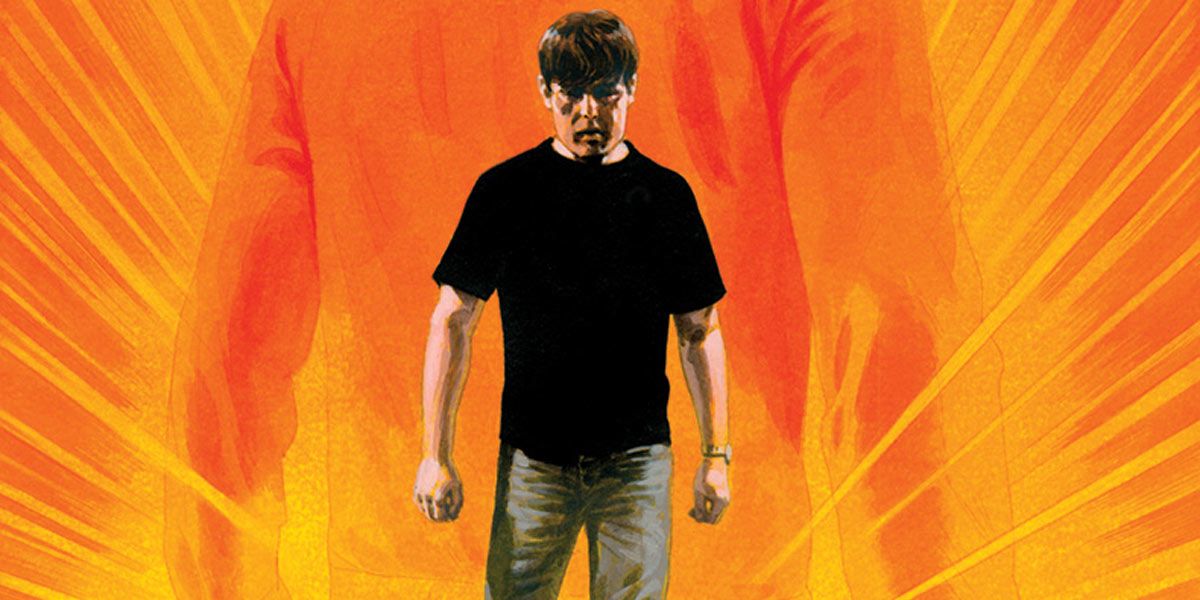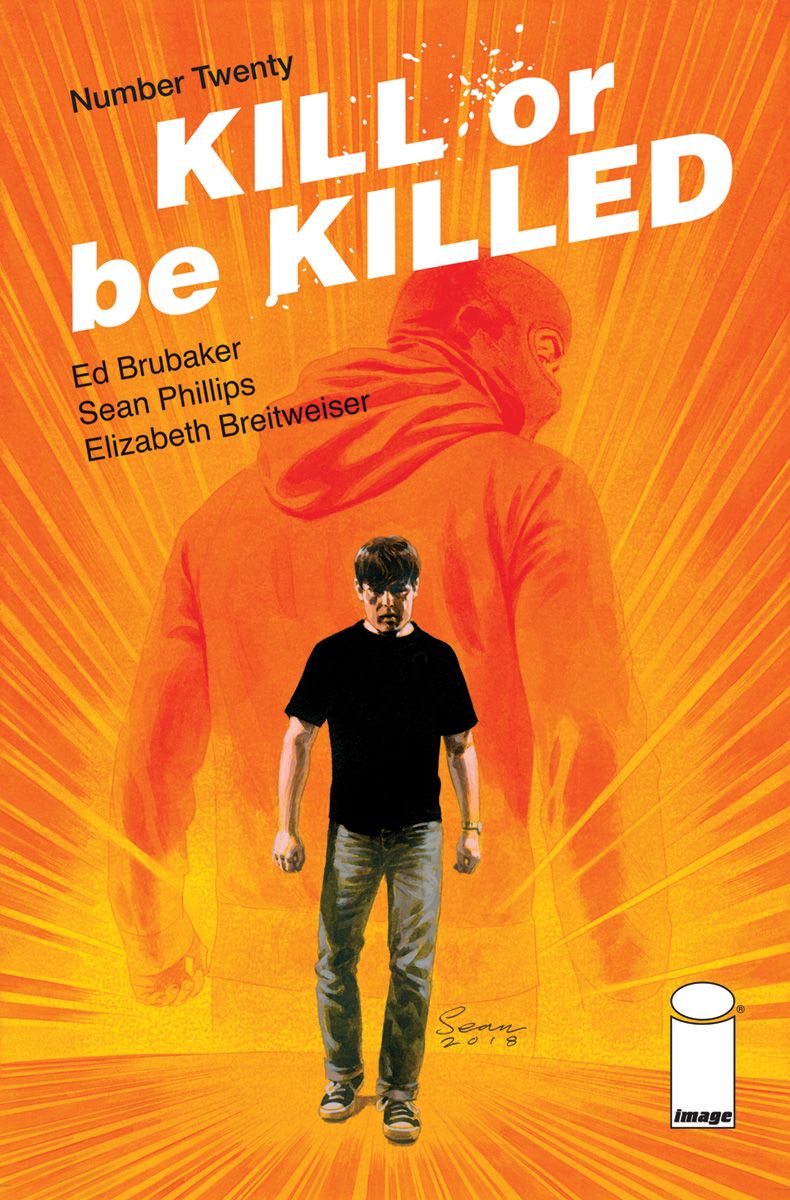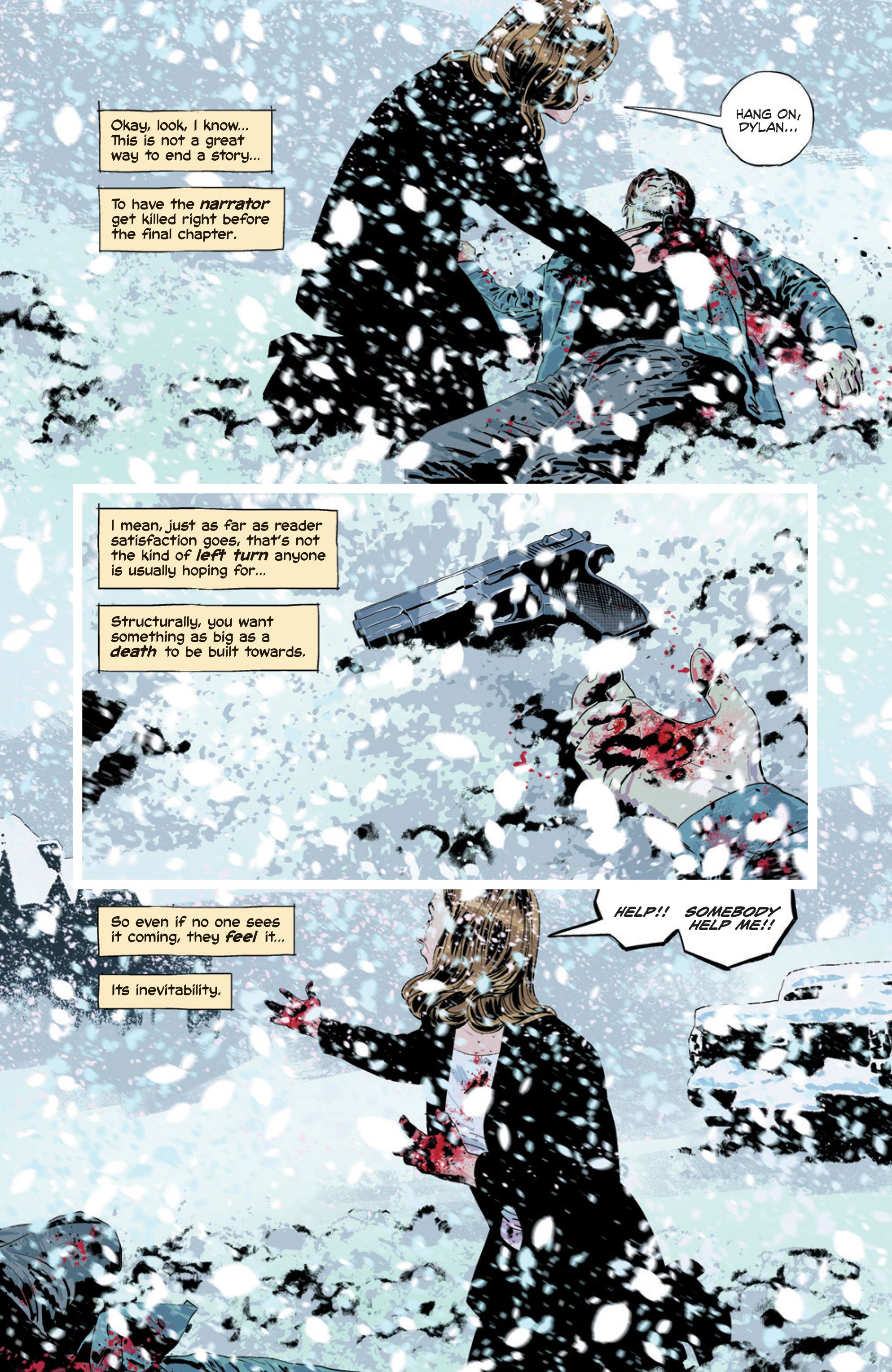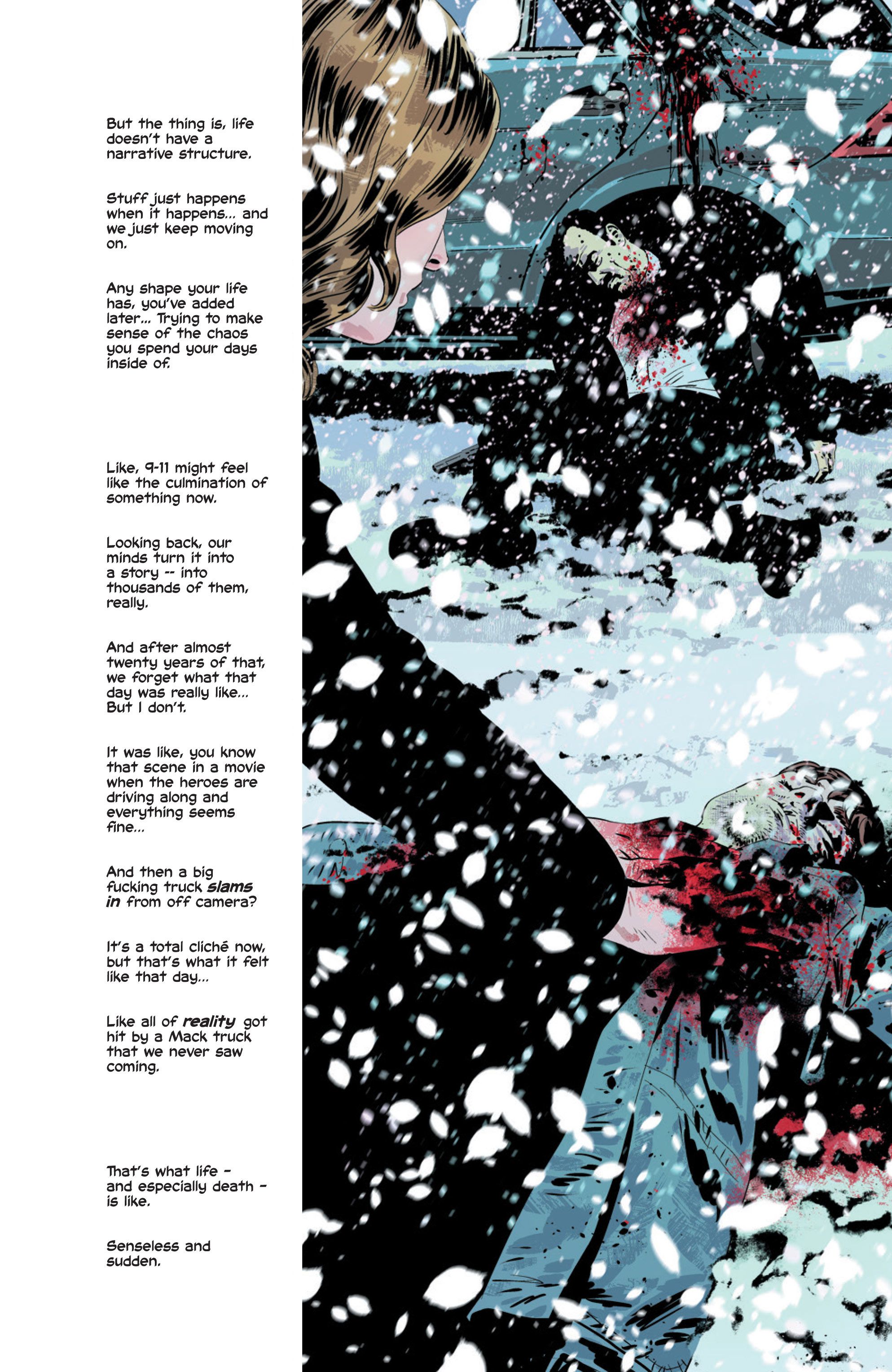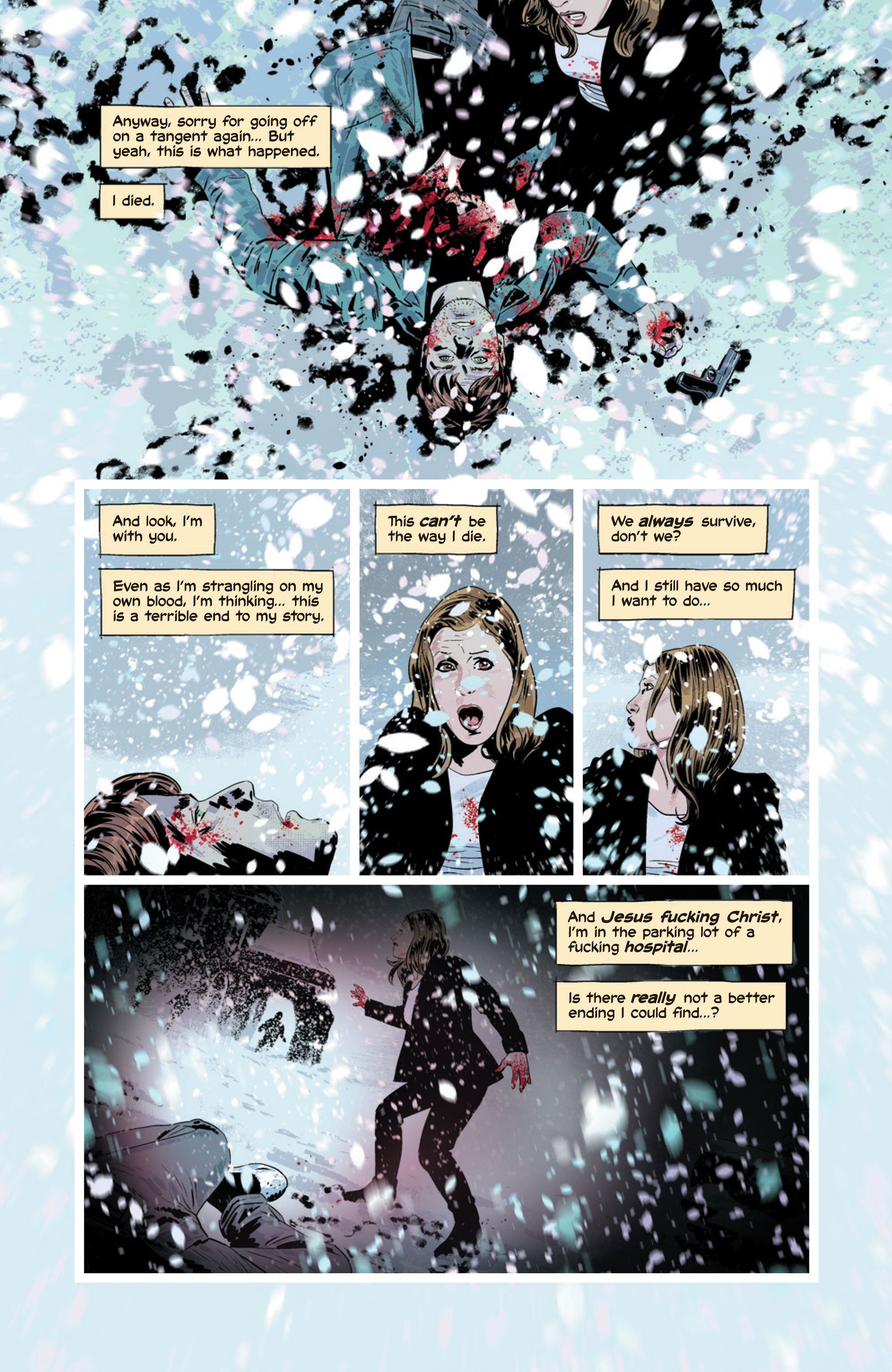When comic book readers think of gun-toting vigilantes, they tend to picture intensely capable antiheroes who use their military training and an arsenal of weapons to wage a one-man war on crime. It's a classic archetype, but in their creator-owned Image Comics series Kill or Be Killed the acclaimed duo of writer Ed Brubaker and artist Sean Phillips have given the vigilante trope a highly compelling facelift by casting a relatively normal person named Dylan as their antihero protagonist.
The series, which launched in Aug. 2016, chronicled Dylan's journey from depressed art student (trying to appease a demon that may or may not be real) to a competent and bloodthirsty killer. Then at the end of the series' penultimate issue, last month's #19, the unthinkable happened . . . Dylan was shot and possibly killed by a Russian gangster.
RELATED: John Wick Helmer Making Brubaker & Phillips’ Kill Or Be Killed a Movie
So what comes next for the series? What questions will Brubaker and Phillips tackle in their series finale, this month's Kill or Be Killed #20? For the answers to those questions and more, CBR spoke with the creators about bringing the series to a close, the journey that Dylan went on over the course of the book and Phillips' character design work. Additionally, the two discussed their involvement in the feature film adaptation of Kill or Be Killed, which Chad Stahelski -- director of the original John Wick -- is slated to helm.
CBR: You ended issue #19 with a hell of a cliffhanger: Dylan getting shot by a Russian gangster and telling the readers, "That's how I died." What teases can you offer up about Kill or Be Killed #20, the series' final issue?
Ed Brubaker: It takes place after that and is the weirdest comic I've ever written, probably. I don't want to spoil it or reveal whether he actually did die, obviously.
You've mentioned in the past that that you wanted Kill or Be Killed to have some of the feel of monthly superhero comics, but also be completely different. And a big difference between this book and monthly superhero comics from the major publishers is that they tend to keep going, while this is ending. So was Kill or Be Killed always going to end at this point and in this way? What can you tell us about the structure of your story and how it's evolved?
Brubaker: Yeah, I always intended it to end the way it's ending, but I didn't know how long it would take to tell the story, and it opened up and did some different things than I thought about at first. It became much more about Dylan's voice and his struggles and his history than I expected it to.
But the structure, at least at first, was very simple, a guy in a mask who has to go out once a month (monthly, see?) and be a vigilante. It was about taking that structure that all of us who grew up going to the shop every week on new comics day have imprinted in our brains, and using it to do something different and familiar at the same time.
And of course, the further in you get into a story, the more it just becomes its own thing. Or hopefully, at least.
Kill or Be Killed has followed Dylan on a journey from reluctant vigilante who feels he has to kill to appease a demon, to a person who's clearly developed a taste for killing and enjoys what he's doing. I can't help but compare him to a character like Walter White from Breaking Bad who sort of started off as a fairly normal guy and then discovered he had an aptitude for crime and came to enjoy it. Is that a fair comparison?
Brubaker: I mean, it isn't one I was thinking of, but sure. I'll take it.
It's definitely a character study of what it might be like to be a relatively normal person who finds themselves in a dark place and what they'd be willing to do, even when it's about "I don't want to go back to who I was before, the safe version of me."
But Dylan's probably got just as much in common with Holden Caulfield as he does with Walter White.
Sean, a lot of how Dylan feels about killing and violence is evident in his eyes and body language in #19. What was it like drawing him at the end of his journey versus back at the beginning?
Sean Phillips: How I draw every character slowly evolves throughout a book, some of it even intentionally. I find it hard to keep on-model for characters, so Dylan ends up looking more like me by the end. He's purposely drawn more tired looking and unshaven though. All he's been through takes a toll on his face. I'm not sure that his body language changes much.
One of the major running elements of Dylan's journey in Kill or Be Killed is that we're unsure if the demon that compelled Dylan to kill was real or a symptom of his mental illness. Is that something you're interested in definitively answering? Or ultimately will it be up to us readers to decide?
Brubaker: No spoilers. Issue #20 deals with this in some ways.
Page 2: [valnet-url-page page=2 paginated=0 text='Avoiding glamorizing violence, new update on the Kill or Be Killed film']
I found Detective Sharpe's reactions to the violence in issue #19 to be especially compelling. How important was it to you guys to have that perspective on what's going on as a counterpoint to Dylan's sort of matter-of-fact narration to what's happening?
Brubaker: Well, I don't know if I look at it that way. Lily's possibly my favorite character in the book, so it was always fun to write her, and I always wanted to build to that climax with her and Dylan having to "team-up" in a sense. It was just about writing who the characters really are that made it work out how it did. Lily, like most cops, has never shot her gun in the line of duty or killed someone. So her reaction is one I think most people would have when ending a life.
For me, a big part of Kill or Be Killed was about not glamorizing the violence, about leaning away from those clichés. The violence was always quick and brutal, and had impact or repercussions. It always rippled outward to create more trouble.
So much of what made Kill or Be Killed resonant for me is the reaction shots and the distinctive facial features of it's cast of characters. Sean, what went into the facial design of characters like Dylan, Mason, Kira and Detective Sharpe? Did you base them on likenesses of people you knew?
Phillips: I shoot photo ref of myself for most of the characters, and Dylan looks a little like me. Mason, Kira and Sharpe are based on photos from an artist's reference book series from Fairburn published in the '70s. I can see from their work that Frank Miller and Bill Sienkiewicz have those books too! They're useful for different faces, but I have to change all their '70s hairstyles.
I'd also like to talk about your other collaborator on Kill Or Be Killed, Elizabeth Breitweiser. The work she's done on colors has added so much to the impact and feel of the series, especially in these final issues. What are some things Elizabeth has added to this last story arc that fans might not necessarily be aware of? What's it been like collaborating with her over the course of the book?
Brubaker: Bettie is such an amazing color artist. I really do feel like she brought an extra layer of tone to every scene, and especially in these last several issues, as the story has come full circle back around to winter, with the storms raging.
Phillips: Bettie gets better with each project. One of the cool things about this project has been drawing New York throughout the seasons, and Bettie adds a lot to those scenes. She always makes interesting color choices and uses great textures. Snow is fun to draw but it needs the right colors to make it look interesting and she does that so well.
Circling back to what we talked about at the beginning, it looks like Dylan's journey as a character may have ended. But do you see yourselves ever revisiting Kill or Be Killed? Do you think there is more story to be told in this world after issue #20?
Brubaker: Never say never, I've learned.
A film adaptation of Kill or Be Killed is currently in development with Chad Stahelski as a director. What kind of involvement will you guys have with the adaptation? How does it feel to have a creator-owned book that you guys did together in active development?
Brubaker: It's always nice to have interest in making movies or TV shows out of our books. As for our involvement, I helped put the package deal together and brought in the screenwriter, and I'm helping to produce the movie, but not on a day-to-day level like I am with my current TV show at Amazon.
And mostly I'm keeping my fingers crossed that it gets made. Chad is shooting Wick 3 now, so hopefully we'll get back into it when that wraps.
RELATED: Ed Brubaker, Drive Director Team For Amazon Crime Drama
Finally, with Kill or Be Killed wrapping, a lot of fans are interested about what you guys are doing next both as a partnership and individually. So what can you tell us about your upcoming projects both in comics and other mediums?
Brubaker: Our next project will be announced soon, but I can tell you it's an original graphic novel, a hardback book that will come out in October. And then after that, another serialized monthly that revisits the world of one of our previous books.
Phillips: I'm going back to drawing on paper for that next book. All my stuff has been digital since the start of The Fade Out, so it will make a nice change. Outside of comics, I've got a few Blu-ray covers out soon from Arrow Films and Kino Lorber, and a few record covers for some film soundtracks and a new band from Glasgow. Comics-wise, I've drawn an eight-pager written by the novelist Ian Rankin for a WWI anthology, also out in October.
Kill or Be Killed #20 is scheduled for release on June 27 from Image Comics.

